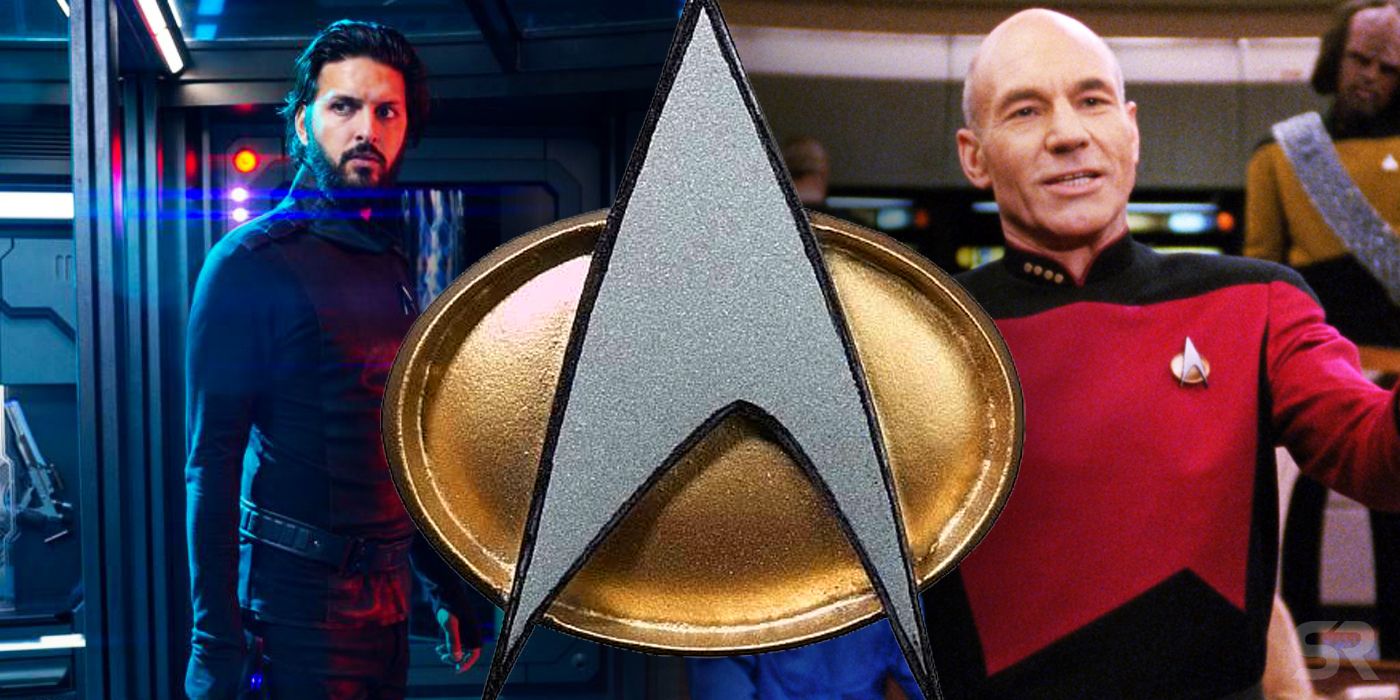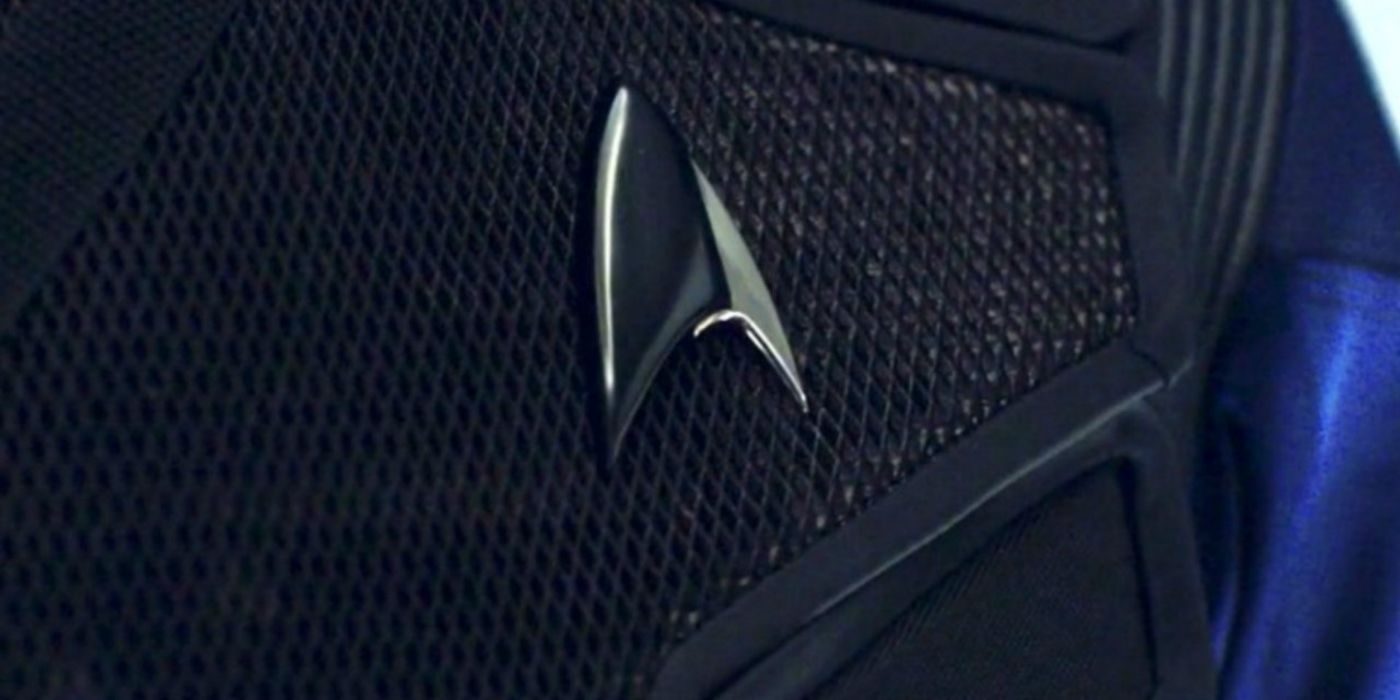The latest episode of Star Trek: Discovery revealed the secret history of Star Trek: The Next Generation's comm-badges. When The Next Generation launched in 1987, the showrunners deliberately chose to give Picard's Enterprise technology that Captain Kirk could only have dreamed of; after all, TNG was set a century after the events of the original series.
The most obvious example of this update was the Starfleet combadge. In Kirk's era, Starfleet was famous for using hand-held communicators, an idea that would have seemed incredibly advanced back in the 1960s. By The Next Generation, though, the communicators had been replaced by combadges, with the Starfleet insignia worn by the crew doubled as a means of communication; they'd press it, the computer would give a helpful chirp, and then they'd be able to speak to any other officer or to the bridge.
Related: Discovery Season 2 Is Better Because It's Properly Star Trek Now
Although Star Trek: Discovery is set before Kirk even took command of the Enterprise, the show seems to have just revealed the secret history of the combadges. In season 2, episode 5, "Saints of Imperfection," Lieutenant Ash Tyler is assigned as a liaison between the Discovery and the Federation's secret black ops division, Section 31. In one key scene, Ash chose to intervene and get help, tapping the combadge to open a hailing frequency to a covert Section 31 ship that was monitoring the situation. Captain Pike was somewhat surprised, to say the least; "What the hell kind of communicator is that," he asked.
Back in Star Trek: Discovery season 1, a bonus scene for the finale had seen one Section 31 operative boast that they had resources beyond even the Federation itself. Clearly, he was telling the truth; it's reasonable to assume the combadges were developed by Section 31 and eventually passed on to the rest of the Federation.
But why is Section 31's technology quite so advanced? There are three possible reasons. The first is that Section 31's budget likely doesn't receive the same level of scrutiny as the rest of Starfleet's, meaning they can pursue promising technology without having to justify its immediate benefits. The second is that Section 31 are unlikely to worry too much about the moral implications of their science; in fact, there have been hints that Discovery itself was partly funded by Section 31, and they probably wouldn't care too much about the fact the spore drive is doing damage to the mycelial network. Finally, Section 31 won't mind acquiring advanced tech from alien races using illicit means. It's interesting to note that Ash's Section 31 ship even has a rudimentary cloaking device, something that would have come in very helpful during the Klingon War and yet doesn't seem to have been shared.
The introduction of Section 31 carries profound implications for Star Trek: Discovery. The Discovery is now working with the Federation's most secretive organization, which means they potentially have access to Next Generation era technology - without causing any continuity problems.
More: Star Trek: Discovery Crippled The Enterprise To Explain A Plot Hole
Star Trek: Discovery streams Thursdays at 8:30pm on CBS All-Access and the next day internationally on Netflix.


